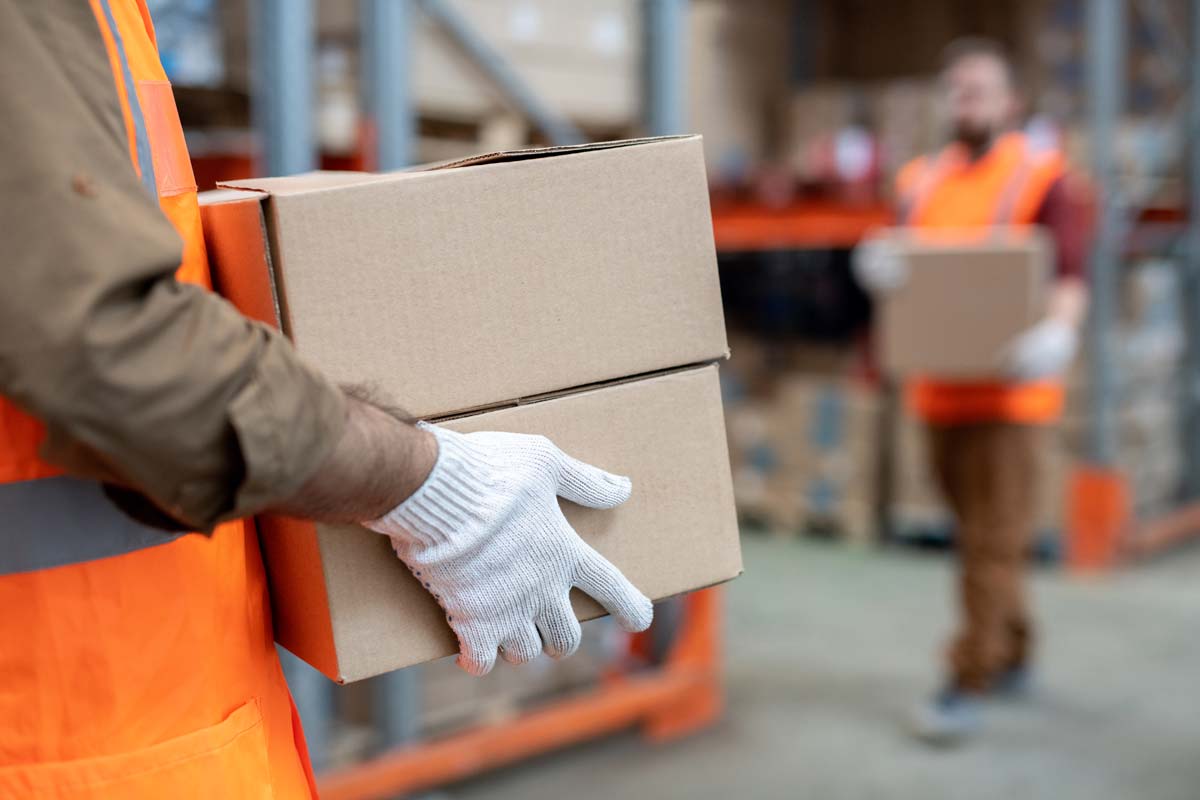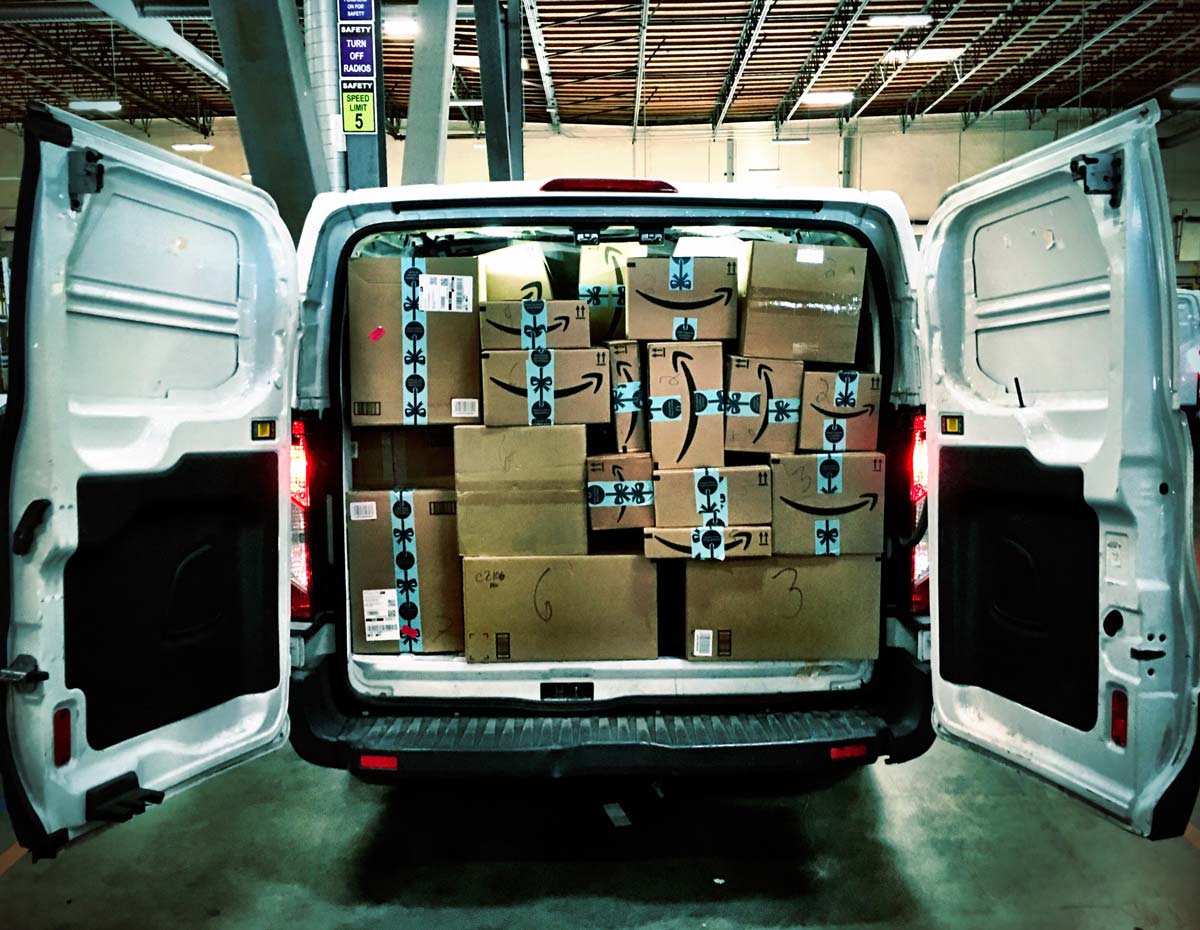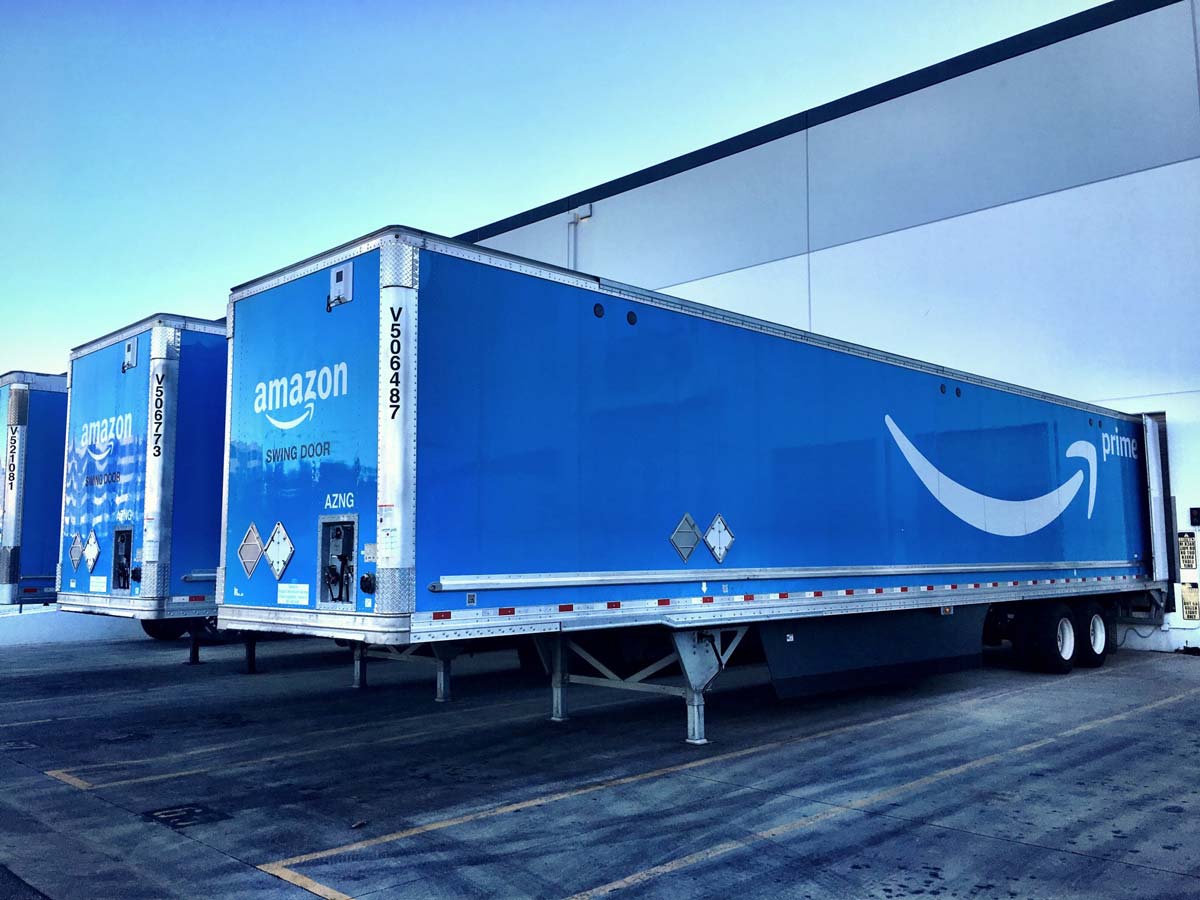Amazon sellers usually don’t want to get involved in logistics, as they perceive it to be too challenging and opt straight away for FBA or fulfillment by Amazon.
But, did you know there is an option that is often overlooked called FBM or Fulfilled by Merchant? Amazon FBM is an excellent way to sell products online, which gives control to merchants.
Deciding whether to sell on Amazon using FBM or FBA comes down to a choice between a sense of control and profit margins.
But, is it right for you and your online business? Or maybe you are one of the many Amazon FBA sellers looking to grab a quicker slice of the pie.
Let’s talk about this type of order fulfillment option, the difference between FBA and FBM as well as how software like Tactical Arbitrage works with FBM sellers to rake in better profits.
Tactical Arbitrage is a great tool to help find deals from wholesalers or discounted products. It helps you gain even more control of your online selling business on the Amazon marketplace.
Set it up, and it goes to work for you even while you are sleeping. It also works well alongside FBM sellers.
What is Amazon FBM?
When you sell on Amazon, you have two shipping and delivery methods to choose from. You can either use Amazon’s fulfillment warehouses and fulfillment centers, well known as FBA (Fulfilled By Amazon).
Or, you can opt-out of the popular convenient FBA method and save selling fees by choosing FBM.
FBM is sometimes referred to as Merchant Fulfilled Network (MFN).
Amazon FBM stands for Fulfilled by Merchant. It is a fulfillment method where the seller takes full responsibility for the inventory.
This means that, instead of paying a fee and letting Amazon manage orders fulfillment, the seller takes care of storing the inventory and shipping orders directly to the buyer.
FBM can be managed directly through the seller or by using a third-party logistics 3PL provider.
Get a great overview of what Amazon FBM is and step-by-step selling tips with this short video:
Amazon FBM Pros & Cons
Fulfilled by Merchant is a very advantageous method of selling and fulfilling orders on Amazon especially for those looking for a lower overhead expense.
However, it’s not for everyone. Many sellers get distracted and jump at the convenience options of FBA Fulfilled by Amazon and opt-out of FBM even though FBM actually provides a much lower cost margin.
Keep in mind that you don’t have to choose between FBM and FBA as a one-size-fits-all solution for all of your merchandise. Some sellers choose both. They use FBA for some products and FBM for others, depending on the individual items they are selling.
To know for sure whether FBM or FBA is a better choice for your products, use Amazon’s FBA Calculator tool. This calculator takes into account your:
- selling plan
- referral fees
- fulfillment fees
- additional fulfillment costs such as order handling or prep services
- 30-day or long-term storage
- picking and packing.
All you need to do is fill in the information such as package dimensions, weight, and product category. Let the FBA calculator do the rest of the work to compare between your fulfillment options.
It will then ask about the item price and shipping costs to determine your bottom line profit margin.
Pros for Amazon FBM
Now, let’s look at the upsides of FBM.
Control
If you really like maintaining control over inventory and every aspect of your business, FBM is a great option. With FBM, the seller retains control over each item sold.
From sourcing the product to making sure it is delivered in a safe and timely manner, to customer service, and returns, the seller is in complete control.
Ultimately, FBM is ideal for the control factor. It allows sellers to retain control over their online selling business.
Profits
FBM sellers typically enjoy a higher profit margin. Selling through FBM allows you to have greater profit margins since you don’t need to pay additional fees to Amazon like you would with FBA.
Without the extra fees to worry about, your profit margins are higher. Typically, FBM is only going to involve a few initial costs to get your online sales set up and taking off.
After that, FBM fees are basically only going to be the costs that you incur for shipping orders
Freedom
With FBM, the seller has complete freedom to run their business however they want, as long as they’re within the guidelines of Amazon.
With you in control of the inventory, you can easily see what items are selling well and when to restock without adding up fees that go hand in hand with the convenience of FBA.

Online/Offline
Since you physically store your own inventory when you use Amazon’s Fulfilled by Merchant, you have higher control and freedom to sell any item quantity online or offline as a retail store.
Since the FBM seller is in charge of storing the product as opposed to shipping it off to an Amazon warehouse or fulfillment centers, you will also:
- have a better grasp of your inventory in stock
- determine what changes need to be made.
Brand Building
Since using FBM puts the seller in full control, you also interact directly with customers.
While it’s never fun to listen to complaints or deal with returns, FBM allows you to get first-hand feedback as to what the customer is looking for and how you can satisfy their needs to build your brand better.
Cuts Amazon Paperwork
When you use FBA as a seller, you also sign up for a lot of paperwork as well as upholding Amazon’s taxation.
However, as an FBM seller, you won’t deal with the hassles of making sure everything is done according to Amazon’s requirements of paperwork.
Instead, an FBM seller works directly with the buyers.
No Worries About Policy Change
With FBM, you don’t need to worry about losses that you could incur due to Amazon changing its fee structure or its policies.
Since you are not tied to the rules and regulations of FBA, FBM sellers don’t have to worry about when the FBA rules change or the fees go up.
Cons for FBM
Of course, no option is perfect. Here are some cons to consider when using FBM.
Shipping
FBM sellers are fully responsible for shipping costs and making sure items get delivered in a timely manner. When you fulfill your own orders on Amazon, you will need to find a shipping or delivery partner that is reliable and cost-effective.
While you can buy shipping through Amazon, the overall shipping cost often is high even though it is discounted. When you do it yourself, you also have to account for shipping supplies and shipping labels.
These shipping supplies and additional costs make it likely that the bottom line shipping costs could add up to quite a lot.
Handling
Before an item is ready to ship, it requires a certain amount of preparation and handling. When you are the one doing this all yourself, it is time-consuming.
Or, you may even have the need to hire warehouse help to get the orders out in a timely manner packed how you want them. This is another added expense.
Customer Service
When you are in charge of your inventory, you are also in charge of dealing with customer service. This means you will be the one who handles any returns.
And, you will be the one to field any complaints. While this gives you first-hand knowledge of what the customers want, it can be discouraging to deal with unhappy buyers.
Time
With FBM, the work is all up to you. So, it is not unheard of for FBM sellers to spend most of their waking hours doing nothing but sourcing, prepping, shipping, and dealing with customers and inventory.
All of this focused energy can take away time you could be spending actually growing your business.

Buy Box and SEO
Unfortunately, selling through FBM is going to lessen your likelihood of obtaining the Featured Offer. Opting for SFP will help you to counter this and improve your odds of winning the Buy Box.
Also, when it comes to how you rank in items searched on Amazon, FBA gives you a boost in search compared to FBM. FBM is going to be slightly lower in ranking the items that you have listed.
Best Time To Use Amazon Fulfillment By Merchant (FBM)
Determining between FBM or FBA as a fulfillment method largely comes down to weighing the bottom line cost and profit margin. FBM works best when you are selling a smaller amount of products.
It also works great for items with low-profit margins or products that are exclusive.
FBM works best when:
- you are a new seller
- the products you sell are exclusive products – products that are unique to your catalog and have little competition
- items you sell move infrequently or in low volumes and are not high-demand products
- products you are selling have lower profit margins
- items you sell are handmade products or fragile
- you already have a third-party fulfillment service other than Amazon in place
- items you sell are bulky, larger products and heavy products which make them expensive to ship items through FBA
For these types of products, an FBM seller will save money by avoiding storage fees and penalties that go hand-in-hand with FBA selling. This is especially true for items with a low turnaround rate.
FBM is also a great option for sellers who don’t want to experience unpleasant surprises in unexpected costs and changes made by Amazon’s fulfillment pricing and policies that happen often.
Additionally, if you are selling handmade items, FBM ensures that the order arrives in good shape. Unfortunately, some products can take a beating in Amazon’s fulfillment centers during peak volumes.
Ultimately, FBM is the best choice for selling products that end up being less expensive to ship items than using FBA. Fulfilled by Amazon, fees are based largely on the weight and the size of the item you are selling – the heavier and larger the product, the more convenient it is to opt for FBM.
If you can ship it for less than the FBA fees, it works out better to use Amazon Fulfillment by Merchant FBM.

Amazon FBM vs. Amazon FBA
When it comes to costs, there is a difference between Amazon FBM and Amazon FBA.
FBM fees
Basically, when you sell using FBM, you incur only the costs of sourcing the product, selling, and referral fee, item selling fee, as well as the cost to ship the item.
Depending on what you are selling and how much you sell, you can choose between the Amazon pro plan subscription fee of $39.99 a month or the individual selling plan that is free.
If you choose the pro plan, there is no selling fee. If you choose the individual seller plan, each product sold incurs a $.99 fee.
The referral fee or item selling fee is going to be between 6% to 45% depending on what category the product is listed in.
FBA fees
An FBA seller is going to incur the same selling fees, but the cost comes in storing and shipping the item.
With FBA, there is a labeling fee unless you opt out of the labeling service. There is also an FBA packaging fee unless you package the item yourself.
Keep in mind, however, that if you don’t properly package the item, you will be charged unexpected fees.
There is also a return processing fee for any item that is returned.
In addition to the packaging fee, there are additional long-term storage fees of your FBA inventory for any merchandise not sold after six months. Finally, there is a stock removal fee for unsold inventory or any items you want to pull from Amazon’s warehouse.
Amazon FBM Vs Amazon Seller Fulfilled Prime
With FBM, the Prime badge does not automatically show up on your listings. To work around this, FBM sellers often use SFP.
Seller Fulfilled Prime SFP is an Amazon program that allows the seller to deliver items directly to domestic Prime customers from their own warehouse or storage facility. Requirements to take part in the SFP program change frequently.
According to the most recent Amazon Seller Central page, Seller Fulfilled Prime is currently not accepting new registrations, but you can join the Waitlist.
Sellers who are approved as SFP tend to make more profits than those without Prime status. SFP also tends to be cheaper than FBA in the long run.
Additionally, SFP gives sellers a lot more control over their own inventory, fulfillment process, and shipping options when it’s time to ship products.
SFP sellers don’t accrue the costly storage fees and penalties that go hand-in-hand with FBA and excess inventory. You can also sell non-FBA eligible items with the Prime badge. Another huge benefit is that you also get to take advantage of Amazon’s customer service.
To earn the highly desired Prime badge on your product listings, you will need to adhere to some strict Amazon policies.
For starters, you agree to ship all orders with One-Day or Two-Day Delivery times at no additional cost to the customer. In order to meet these expectations, Amazon provides you with access to transportation solutions.
When an SFP seller combines their Prime status with selling FBM, it boosts their chances of winning the Buy Box.
Winning the Buy Box simply means that when customers click on an item to add it to their basket, their default option will be to buy the item from you.
The coveted Buy Box accounts for 82% of all sales, so boosting your chances of winning the Buy Box is very important to your Amazon selling success.
To be an Amazon Seller Fulfilled Prime you will need to:
- offer premium shipping options
- maintain a 99% on-time shipping status
- maintain less than 0.5% order cancellation rate
- use Amazon Buy Shipping services for at least 99% of your orders
- have nationwide delivery coverage for all standard-sized items
- use shipping methods that support weekend delivery and pickup
- meet 1-day or 2-day delivery targets
- deliver orders with Seller Fulfilled Prime carriers
- agree to Amazon returns policy
- allow Amazon to handle customer service inquiries
Before you can enroll in the Seller Fulfilled Prime program, you will first need to complete a trial period. During the trial period, you will need to process items in a zero-day handling time.
The trial period can take anywhere from 5 to 90 days. Once this is completed, the Prime badge will show up on your listings.
Items that work best for Seller Fulfilled Prime shipping include:
- valuable, high-priced products
- items that have an unpredictable or a seasonal demand
- products that have variations
- merchandise that is slow moving
- items that require special handling or preparation
Final Thoughts
Choosing FBM to sell on Amazon is going to depend on what items you sell among other considerations.
If you want complete control over your business and your inventory while saving the additional fees you would incur with FBA, then FBM is the way to go.
Many sellers choose to have a back-up plan by using both FBA and FBM by enrolling their most popular products and bestsellers with FBA and using FBM for the rest.
When you decide to be an FBM seller, get the most out of your business by using Tactical Arbitrage. This software has become a very important tool for sourcing the most cost-effective products that are easy to store and ship, as the software provides you with other valuable data.
Tactical Arbitrage is a software solution that is used primarily for online arbitrage & wholesale sourcing in the Amazon space.
Customize what you want to look for. The software scrapes many online stores like Walmart, Target, or Best Buy to compare prices based on certain criteria that you set.
As an Amazon FBM seller, Tactical Arbitrage comes alongside you to help you literally make money 24/7 in your pajamas. You can grab a free trial of Tactical Arbitrage here.
Related Questions
How does Amazon FBA work?
Amazon FBA allows you to sell products on Amazon without having to worry about warehousing or shipping them yourself. Instead, you can focus on marketing and growing your business.
Why is Amazon FBM better than Amazon FBA?
Amazon FBM is a service offered by Amazon that allows sellers to list their products on Amazon without having to worry about fulfillment or shipping to Amazon.
There are fewer Amazon fees associated with FBM and you have more control over certain aspects of the customer experience.


